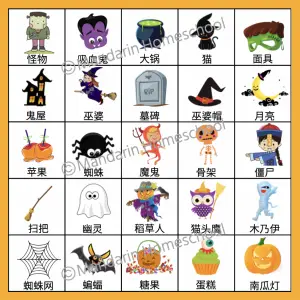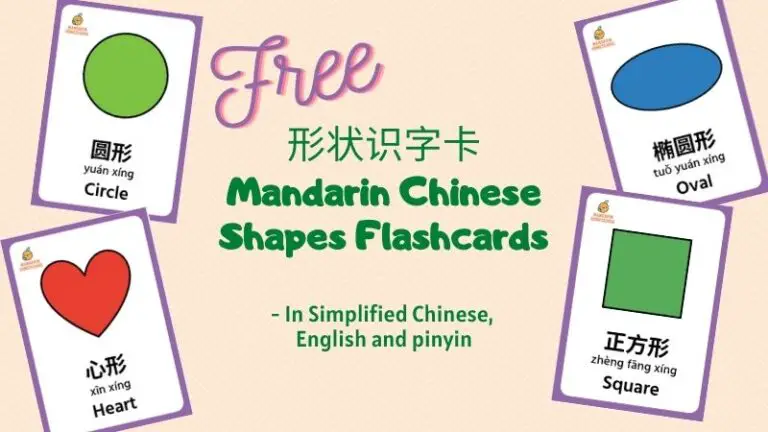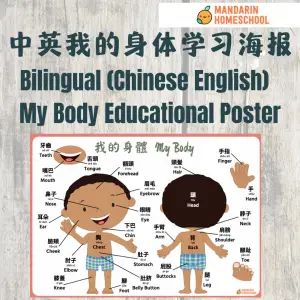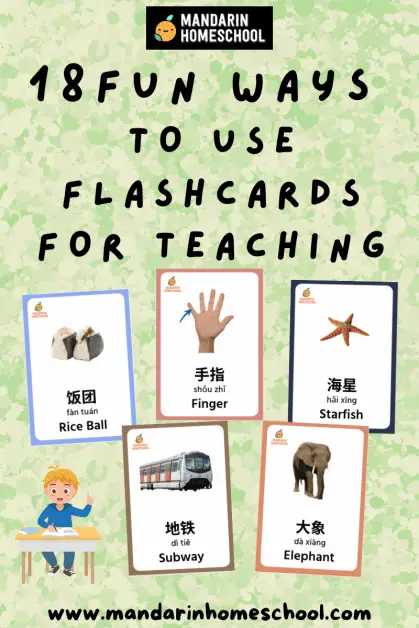
Flashcards are a simple, fantastic and believe it or not, a very versatile teaching tool for vocabulary building in any language. They present abstract information visually in pictorial form, which is very helpful for visual learners to pick up new vocabulary. The bad rap that flashcards have come from poor teaching. And yes I mean the tediously endless flashcards drill!
Flash an Apple flashcard “What is this? Apple. Good.” Flash an Orange flashcard What is this? Orange. Good…” You get the idea. When I used to work with students with special needs, we would conduct endless amounts of flashcard teaching drills, until the students (and I) were so bored they started spacing out. No wonder!
The truth is, there are so many fun ways to use flashcards, and in this article, I will show you 16 fun and easy ways to use flashcards for teaching that is anything but tedious.
Fun flashcard teaching activities for all learners
1. Matching Flashcards Speed Game (Easy)

Speed game: Set a timer and challenge players to see how quickly they can match or answer a set of flashcards.
You will need
- timer (an hourglass type works best for viusually motivated students) or your iphone
- 2 sets of identical flashcards
Place 1 set of flashcards with the picture facing up, then you turn the timer on tp countdown, and challenge your student to complete matching all the cards within the time limit (without messing the cards up too much!)
My son, Da Bao 大宝 loves any activity that requires speed. He gets a kick out of matching the cards as quick as he can to beat the clock. As additional learning practice, at the end when he has matched everything, we will read out each label together.
This was one of my son’s favourite way of learning with flashcards and super easy to set up. I just had to watch him match as I hit start on the stopwatch of my phone! Sometimes I take up the challenge to see if I can beat his time!!
2. Speed Drill
Speed Drill: Another speedy game! Are you ready to be the quickest?
You will need
- timer (an hourglass type works best for viusually motivated students) or your iphone
- 1 set of flashcards
Set a timer and challenge players to see how many flashcards they can correctly identify in a certain amount of time.
You can either ask for it receptively whereby your child has to point/match/give you the correct flashcard. OR
You can ask your child to expressively identify the flashcards as you point to them. To make it more fun, you can use a grabbing hand, a rainbow stick, a flashlight to point to the flashcards.
3. Memory Game
Memory Game: Create a matching game by creating pairs of flashcards with related words, images, or concepts.
You will need
- 2 sets of identical flashcards
The good old memory game. it’s a good old classic game, as it so easy even for very young children to understand the rules of the game, and so much fun to play with. All my children loves playing it, and we never only just play it once. One twist to the rule that I do with them is that they have to verbally label the pairs before they are allowed to pick up the pairs.
Teaching tip: label each and every card to encourage auditory learning.
4. Memory Tester
Memory tester: a fun game where you have to recall the flashcards, in the right order!
You will need
- 1 set of flashcards
- a timer (optional)
Place 3 flashcards on the table, with the pictures facing up, and label each of the flashcards. Give the students some time to memorise them. Flip all the cards over and have them recall what those cards were.
Challenge your child by increasing the number of cards shown!
You could vary the game by asking your child to remember one of the flashcards, then move the flashcards around. See if your child could track it!
For older children who can write – Students have write down which cards were shown, on a piece of paper in the correct order.
5.Montessori Flashcard Method (3 Parts)
You will need
- 2 sets of identical flashcards. 1 set is cut up to its component parts
I recently learnt about the Montessori 3 part flashcards teaching method and I absolutely love the idea. For readers who are new to the concept, this toddler life does a good job of explaining the method and rationale.
What I love about this method of presentation is that you can adjust the teaching level according to the student. Younger students can do the basic identical picture to picture matching, or identical word to word matching. Once they can do that, you can have them match the picture and word together (like a puzzle).
Building on this rationale, I have created all my Mandarin Chinese learning flashcards in a similar fashion. The best thing about these Chinese flashcards is that instead of 3 parts, you actually get 5 parts. Read more about it here.
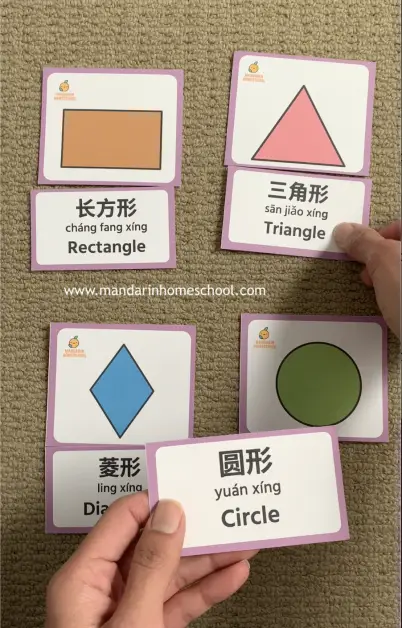
6. What's missing?
What’s missing? Let’s see if you can remember!
You will need:
- 1 set of flashcards
- cardboard or cloth to cover up the cards
Place 3 flashcards on the table, give the students some time to remember the cards. Then cover them all up, and remove 1 of the cards.
Now, see if they can tell which one is missing!
Increase the difficulty by adding more flashcards on the table.
7. Guess what it is?
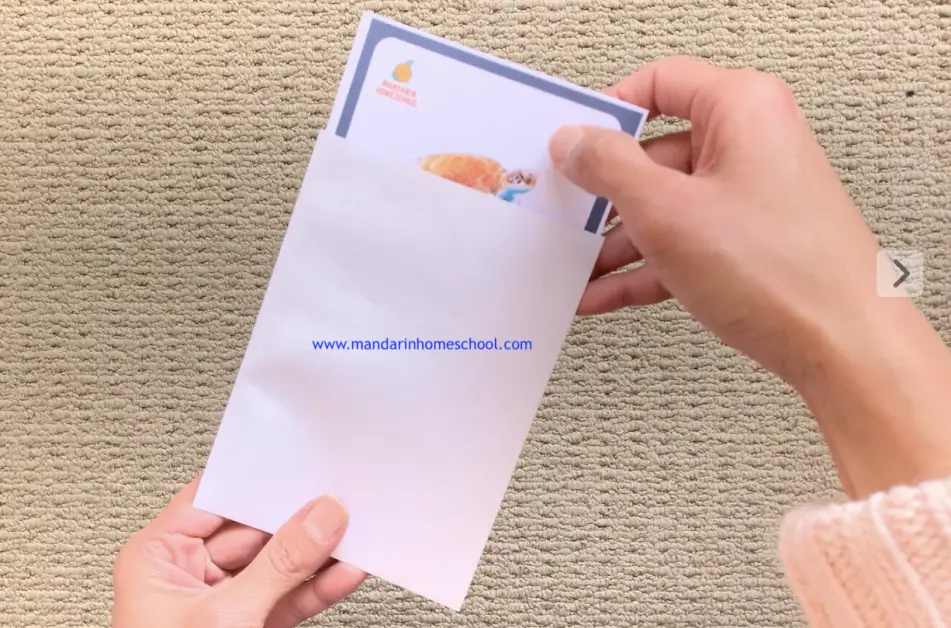
You will need:
- 1 set of flashcards
- envelope (you can make one easily out of coloured paper)
Place five flashcards into the envelope. Then, slowly slide the first flashcard out to reveal it. Students have to guess what the picture is as quick as they can, before the entire card is revealed.
Keep score and see how many your student can say accurately for the whole set of flashcards.
8. Flashcards Scavenger Hunt
Scavenger hunt: Hide flashcards around a room or outdoor space and have players find them. The player who finds the most flashcards wins.
I have really bitter sweet memories of this. In 2020, when we first went into lockdown in Australia and could only move in a 5km radius, we brought our colour flashcards out for a colour scavenger hunt in our neighbourhood. Exercise and learning at the same time, what better reason to head outside? (apart from the intense need for fresh air and not just having stayed indoors for the past 2 weeks only seeing your family members and driving you cray cray…)
You will need
- 2 sets of identical flashcards
Stick one set of flashcards on the wall or on the furniture around the room. Place the other set of flashcards in a bag. Draw one card at a time, and have your students search for the matching card and tap it as soon as they can.

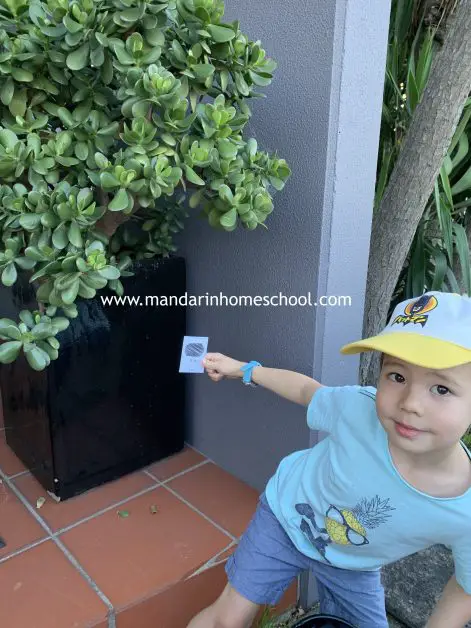
Charades: Have players draw a flashcard and act out the word or concept to see if other players can guess what it is.
Pictionary: Similar to charades, but instead of acting out the meaning of a card, players draw a picture to represent it.
11. BINGO
Bingo: Create bingo cards with images or words from the flashcards, and have players mark off the cards as they are drawn.
I love to teach through play and have used BINGO cards with my children to learn new Chinese vocabulary for Halloween and Christmas.
12. Whisper down the line
You will need
- 2 sets of flashcards
Students will sit in a line. Display one set of flashcards. Have the other set in a stack with the first person in the line. First person in the line draws out a card from the stack. He/she whispers to the person next in line, who does the same, until the last person in the line, who will then have to select the flashcard he/she thinks is the correct object.
The person who was at the front will then move to the back of the line so everyone gets a turn.
I really like this teaching activity as it promotes cooperation. And the results are hilarious when they get it wrong!
13. Sorting Game
Sorting game: Divide the flashcards into categories and have players sort them into the correct groups.
Fun flashcard teaching activities for older/advanced learners
The following activities are a bit more advanced and are suited for learners with intermediate reading skills.
14. Flashcard Relay Race
Flashcard relay race: Divide a group into teams and have them race to see who can correctly answer a set of flashcards the fastest. Once one team member answers, they pass the card to the next teammate, who must answer the next card in the set.
15. Vocabulary Race
Vocabulary race: Divide a group into teams and give each team a set of flashcards with vocabulary words. The teams race to see who can correctly define the most words in a set amount of time.
Storytelling: Use flashcards to create a story, with each player drawing a flashcard and adding to the story based on the word or image on the card.
17. Sentence Building
Sentence building: Use flashcards with individual words or phrases to create sentences, with players taking turns adding to the sentence.
18. Sentence Completion
Sentence completion: Write a sentence on one side of a flashcard, leaving a blank for a key word. Players must guess the missing word or phrase.
And there you have it, a whopping 18 fun and easy ways to use flashcards for teaching. And not once did I mention flashcards drill!
Not sure where to get good quality flashcards? Check out the awesome Montessori style Chinese flashcards that I created to teach Chinese, English and pinyin/zhuyin.
You can read more about what Montessori flashcards are in this post, and download a free copy of the Mandarin Homeschool Montessori shapes flashcards.
Also check out our best-selling bilingual posters. We have 16+ themes covering all essential preschool and primary vocabulary in English and Chinese.
Happy Teaching!



